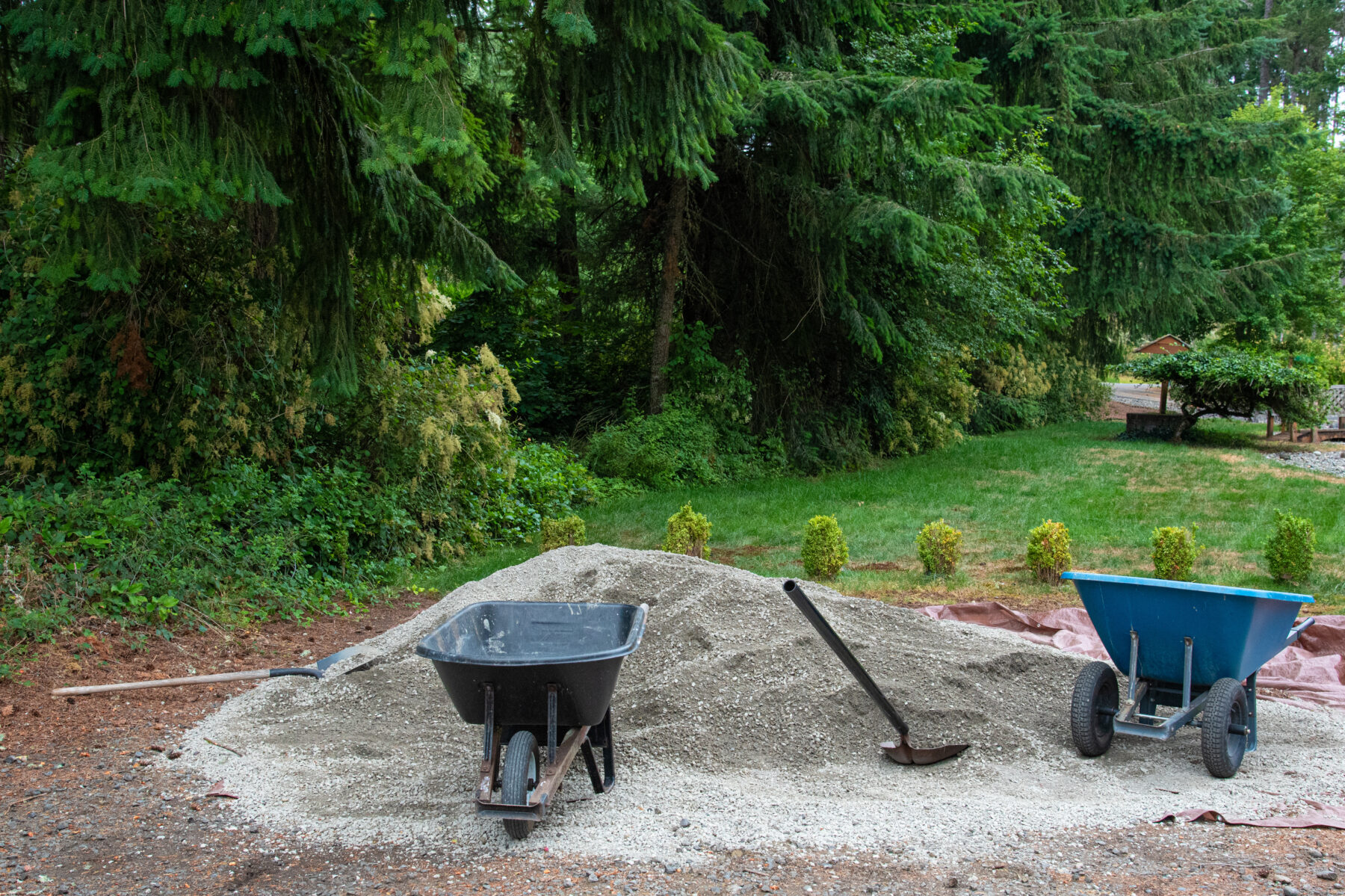Give Your Lawn a Facelift: Gravel Landscaping Techniques for Spring
March 7, 2024
Spring’s arrival breathes life back into dull, winter-worn yards and gardens. Imagine transforming the yard into a fresh, distinct setting that requires minimal upkeeping throughout the year. This stunning transformation is possible with gravel landscaping, a versatile alternative to traditional grass lawns.
What’s great about gravel landscaping? Well, it’s a bit like a chameleon. It can easily shift character depending on what attempting to be achieved with the outdoor space. It effortlessly transforms to meet the needs of any outdoor space, whether that’s a peaceful sanctuary or a lively play area for children. Additionally, its outstanding properties make it a desirable choice. It’s not only low-maintenance and economical, but also eco-friendly.
Why Choose Gravel for Your Spring Landscaping?
First and foremost, the impressive practical benefits of gravel are obvious. It’s a substrate that stands the test of time, weather, and foot traffic. Compared to other landscaping materials, gravel proves to operate on a different level in terms of durability as well. It can withstand almost everything nature throws at it, giving you a sustainable solution that lasts year after year.
Looking at cost-effectiveness, gravel is a strong candidate. Choosing gravel presents a less expensive option compared to materials like paving, brick, or stone. But it’s not just about the initial costs. Gravel also requires minimal upkeep, which translates to further savings in the long run. No frequent waterings or mowing’s – a simple rake over occasionally is all it needs to maintain that neat and clean look.
Aesthetically, the versatility of gravel is genuinely awe-inspiring. This stone comes in an astonishing range of colors, shapes, and sizes. Whether your garden theme is minimalist, rustic, or tropical, there’s a type of gravel to match. Pale hues might complement a coastal theme, while darker, jagged stones might be perfect for a modern, edgy look. And who can forget the classic appeal of traditional pea gravel? The point is, whatever the design preference, gravel caters to it.
Planning Your Gravel Landscaping Project
Feeling the desire to breathe new life into a lawn with springtime gravel landscaping? Start by conducting a detailed inspection of the outdoor area. Consider the amounts of sunlight reaching the yard and make note of all existing plant life. The information gleaned will prove invaluable in deciding the most suitable locations for incorporating gravel into the landscape.
Crucially, keep in mind the need to balance soil and vegetation. Trees and other verdant plant life should remain untouched when laying out the gravel design.
Moving onto the next stage: gravel selection. A variety of options await, from pea gravel, best for providing a smooth surface on garden trails, to crushed stone, the perfect pick to inject a rustic charm. Also consider river rocks, appreciated for their diverse shapes and sizes. Ultimately, the chosen gravel should reflect an individual aesthetic, and harmonize with the existing garden elements.
Finally, a word on design: aim to match colors and textures to the overarching theme of the garden. Shy away from following trends blindly, instead, tailor designs to a unique individual style. The result should be a garden; a mirror reflecting personal taste and aesthetic preferences.
Essential Gravel Landscaping Techniques
Starting with the basics, it’s time to prepare the lawn for a gravel landscape. Not as difficult as it might seem, there is a simple, step-by-step process:
Clear the designated area of any existing grass, plants, or debris. This action provides a blank canvas for the new gravel landscape.
Next, lay down a layer of landscape fabric. Acting as a barrier, landscape fabric minimizes weed growth that could disrupt the clean look of the gravel landscape.
Lastly, consider drainage. Proper drainage ensures water does not pool on top of the gravel landscape, potentially causing a muddy mess. A gently sloping surface directs the flow of water away from the home.
With the lawn ripe for transformation, it’s time to lay the gravel. But laying gravel isn’t just about dumping heaps of stones onto the lawn. Here are a few best practices:
Aim for a gravel depth of about 3 to 4 inches. This depth is typically enough to create an aesthetically pleasing layer without using excessive materials.
Spread gravel evenly over the area with a rake. This technique ensures a level surface for both aesthetic appeal and practical use.
An often-overlooked aspect of gravel landscaping is edging. Why is edging important? Acting as a frame for the gravel landscape, edging maintains clean lines and prevents the gravel from spilling into adjacent areas. It lends an orderly, tidy appearance, and can also add an extra design element depending on the material chosen.
Incorporating Plants and Other Elements
When enhancing landscapes with gravel, the first step involves selecting appropriate plants that can grow successfully in such environments.
The plant group worth considering first includes succulents. These plants are loved in the world of gravel landscaping because their unique ability to withstand drought makes them perfect for this kind of gardening. Along with these practical benefits, succulents also come in a variety of shapes, colors, and sizes, adding a visually appealing contrast to the natural beauty of the stone.
Next on the consideration list should be ornamental grasses. These plants, with their tall, slender stalks, add a sense of movement and dynamic visual appeal to the garden by gracefully swaying in the wind. Added advantages include their resilience to drought and pests, making them a low-maintenance option.
Drought-resistant perennials also deserve consideration in gravel-centric landscapes. Plants such as Lavender, Coneflower, and Russian Sage have the ability to survive with little water for extended periods, making them ideal for gravel-based gardens. As a bonus, these plants not only add a pop of color to the landscape but attract valuable pollinators.
Beyond plant selection, a well-rounded gravel landscape also involves the incorporation of suitable hardscape elements. The use of steppingstones, for example, adds practical utility and offers a break from the visual monotony of gravel. The placement of benches provides a retreat for reflection and garden appreciation, while the introduction of garden sculptures can offer an artistic layer to the outdoor area.
Gravel landscaping could provide the perfect solution. Beyond the aesthetic appeal, this technique offers multiple advantages such as eco-friendliness and durability, not to mention it’s effortless to maintain. It serves as the ideal medium for unifying various components of the garden, combining them into an attractive theme. Electing gravel landscaping in the spring could present the perfect balance of elegance, environmental friendliness, and most importantly, simplicity in maintenance. The yard might just deserve this refreshing transformation.


